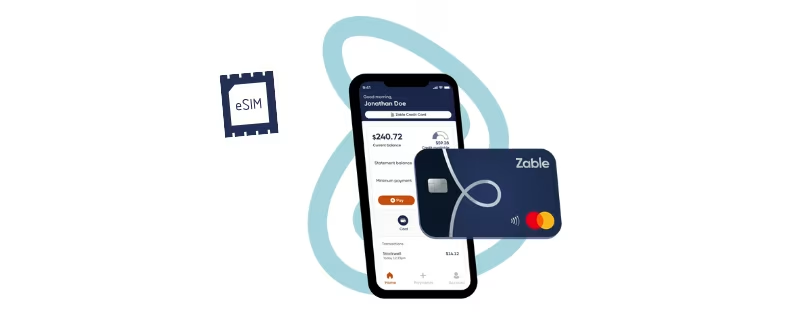
Travel eSIM Drives Global Adoption as Business and IoT Use Cases Expand
The latest GSMA Intelligence report shows that global eSIM adoption is entering a new phase of acceleration, with travel eSIM emerging as the breakout success story while business and IoT use cases steadily gain ground. Once considered a niche feature for tech-savvy users, eSIM is now shaping the way people connect across borders, how enterprises manage mobile fleets, and how industries deploy flexible connectivity solutions.
According to Pablo Iacopino, Head of Research and Commercial Content at GSMA Intelligence, momentum is being driven by a mix of consumer demand, ecosystem innovation, and operator strategies. Mobile operators are expanding into global travel connectivity, device makers are embedding eSIM into everything from smartphones to wearables, and enterprises are beginning to integrate eSIM into business workflows and 5G deployments. The result is a market that is evolving far beyond smartphones, opening up opportunities in fixed wireless access (FWA), children’s wearables, temporary connectivity, and industrial IoT.
At the heart of this shift lies travel eSIM, a use case that has already reached mass adoption among international travelers and is reshaping perceptions of what eSIM can deliver. But GSMA’s data also highlights the bigger picture: eSIM is becoming a foundational technology for the next decade of mobile connectivity, unlocking flexibility for consumers, incremental revenue for operators, and new service models for the wider digital economy.

eSIM market trends GSMA report
Travel eSIM
Travel eSIM has become one of the most successful use cases for eSIM adoption, with GSMA Intelligence data showing that on average 51 percent of eSIM users across 11 major countries used the service while travelling abroad for leisure or personal reasons. The rising demand has fueled the growth of global providers such as Airalo, Holafly, and eSIM.me, while non-telecom companies, including Latam Airlines and Revolut have integrated travel eSIM into their offerings. MVNOs have led the trend so far, but MNOs are increasingly entering the market, with recent launches from Vodafone and Bouygues Telecom covering more than 200 countries, and Du introducing travel eSIM for transit passengers in UAE airports. Travel eSIM is seen as a clear benefit for consumers, helping to shift perceptions among those uninterested in eSIM due to lack of value. For operators, it represents an incremental revenue opportunity, even if it risks cannibalising traditional roaming income. MNOs, with their stronger brand trust, are well-positioned to capture part of this growing market as consumer adoption continues to rise.
Adoption of eSIM connectivity
As of June 2025, a total of 123 eSIM-enabled tablets and smartwatches had been launched, though adoption of eSIM connectivity in companion devices remains limited due to cost–benefit concerns. MegaFon introduced a children’s smartwatch with eSIM in January 2025, but uptake has been modest. More momentum is building around eSIM for fixed wireless access (FWA), with 161 operators offering 5G FWA services across 78 countries. Recent moves include Eolo in Italy partnering with Thales, while operators like Odido are exploring on-demand eSIM-based connectivity with services such as SimWallet. eSIM is well-suited for FWA, particularly in scenarios where CPE is installed outside the home. By 2030, household penetration of 5G FWA is forecast to exceed 10 percent in markets including Australia, Germany, Italy, Japan, Saudi Arabia, the UK, and the US, while remaining in low single digits in many others. Temporary connectivity is emerging as a growth opportunity, with eSIM enabling fast network access for short-term needs such as events, broadcasting, or network outages. This trend is expected to expand as operators seek to monetize 5G through new, flexible propositions.
eSIM in smartphones
Adoption of eSIM in smartphones has been slower than expected, reaching only 3 percent of global connections in 2024 compared with the 15 percent forecast six years earlier. Nearly half of eSIM users are in the US, where the launch of eSIM-only iPhones in 2022 pushed adoption to about 30 percent. To accelerate uptake, operators are increasingly targeting the business market, with initiatives such as Three UK and Mindszi’s eSIM Copilot solution integrated into Microsoft Teams. Business eSIM offers operators the ability to secure large volumes under single contracts while also familiarizing employees with the technology, which could encourage personal adoption. GSMA Intelligence forecasts global eSIM smartphone connections will double between 2025 and 2026 and reach 4.9 billion by 2030, representing 55 percent of all smartphone connections. North America is expected to surpass 50 percent adoption by 2027, followed by Europe in 2029.

VC funding in eSIM companies
Since 2022, eSIM companies have secured 16 investment deals worth $5 million or more each, raising a total of nearly $700 million. Activity has accelerated in 2025, with five deals through mid-July amounting to just over $300 million. Airalo, a leading travel eSIM provider, became a unicorn in July after raising $220 million in a funding round led by CVC, highlighting both rising investor interest and the success of the travel eSIM use case. In April 2025, IoT connectivity provider 1NCE raised $60 million, while in June 2025, Kigen received new funds from Japan’s SBI Group, along with additional backing from Arm and SoftBank to scale its eSIM/iSIM solutions for industrial IoT. Travel eSIM and IoT eSIM are expected to remain the primary drivers of investment, with startups leading innovation in new use cases. Telco participation in funding has been limited, though SoftBank has been active with investments in Kigen and 1NCE, while Airalo has received backing from multiple operators, including Telefónica, KPN, Orange, Liberty Global, Rakuten, and Singtel.
Operators’ power eSIM market
In January 2025, MegaFon launched a new white-label eSIM smartwatch under its Fontel brand, targeting children. The device includes geolocation with 10-meter accuracy, audio and video calling, messaging, and a voice assistant to support both learning and entertainment.
In March 2025, Du introduced a travel eSIM service for transit travellers at UAE airports. Passengers can connect to airport Wi-Fi, scan a QR code, and instantly purchase data packages covering over 190 countries, with activation completed within minutes.
Also in March 2025, Italian FWA provider Eolo partnered with Thales to expand high-speed broadband using eSIM-enabled devices. The initiative aims to deliver 1 Gbps services through 5G and mmWave technology, helping underserved communities and supporting the EU’s 2030 broadband goals.
In April 2025, Odido launched SimWallet, an app enabling temporary eSIM-based 5G connectivity in the Netherlands with unlimited data options ranging from a day to a month. Available to anyone regardless of customer status, the service supports smartphones, laptops, tablets, and smartwatches, with speed-based tariffs and technology developed in collaboration with 1Global.
In April 2025, Three Business launched a large-scale eSIM trial in Birmingham and Bristol, giving over 50,000 UK businesses the chance to test its network free for 30 days before deciding to switch. The fully digital process, developed with eSIM Go, aims to provide a real-world experience beyond coverage maps and third-party reports.
In July 2025, Latam Airlines introduced its own branded global travel eSIM service, offering 1–10 GB data packages across regional and international destinations. The service is designed to enhance travel experiences, build loyalty, and generate new revenue, with customers earning Latam Pass Miles on purchases. The solution is powered by Gigs, which integrates digital connectivity for fintech and travel companies.
In June 2025, Vodafone unveiled a digital travel platform based on travel eSIM, open to users of any network. The service allows travellers to buy mobile data, retain their phone number, and install eSIMs within minutes. Covering 206 destinations on 700 mobile networks, including 5G in 98 countries, the platform gives Vodafone a global reach beyond its own subscriber base.
Conclusion
GSMA’s findings confirm what Juniper Research and Ericsson’s Mobility Report have also highlighted: eSIM is no longer a niche add-on but a structural shift in connectivity. Travel eSIM has proven the breakout use case, with MVNOs like Airalo and Holafly paving the way and MNOs such as Vodafone and Bouygues now scaling it globally. At the same time, enterprise pilots, IoT funding rounds (Kigen, 1NCE), and FWA initiatives show that eSIM is moving on dual tracks—consumer-led through travel and enterprise-driven through 5G and IoT.
The implication is clear: operators that still see eSIM as a roaming threat risk falling behind. Those that embrace it as a platform for flexible connectivity and new service models will be best positioned to capture value in the next wave of mobile growth.
Not sure which eSIM is best for you? Check out the Best eSIM Finder to compare providers and find the right fit.









